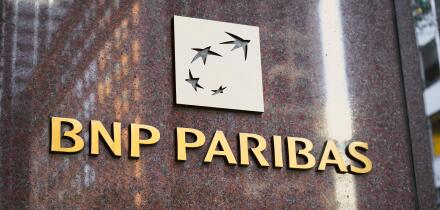Volatility trading is coming back in fashion, say many investors and strategists, stealing ground from macro trading strategies, which have dominated returns in recent years.
Debt and equity markets in the US and Europe are predicted to be range-bound rather than directional. Equity market valuations are thought unlikely to improve much further, having become rich during the big 2011-2015 stock rise. But any falls in 2016 will be cushioned by the US Federal Reserve, which has shown continued willingness to support the stock market and is unlikely to raise rates much in 2016.
Range-bound stock markets with higher volatility are typically profitable for options traders, whereas directional markets favour macro players.
“I believe the market set-up for equity volatility managers to be attractive,” says Scott Jacobson, a director of investment strategy at Hirtle Callaghan in West Conshohocken, Pennsylvania. “Barring recession, the yield curve will cushion the downside in stocks. Such a range-bound market is advantageous for short volatility strategies.”
This shift from directional to range-bound is a big market change and managers must adapt fast. But that may not be an easy feat since volatility trading has long been out of fashion.
The super-spike in implied volatility during the credit crisis was followed by several years of calm, as central banks throughout the developed world slashed rates and bought assets. Managers across the spectrum of volatility strategies found themselves flatfooted. The prices investors were willing to pay for hedging products were unattractive and both performance and the amounts investors were willing to allocate to them suffered.
Except for a few bumps in the road, such as the Greek sovereign debt crisis, measures such as the CBOE Volatility Index (VIX) and the EURO STOXX 50 Volatility Index (VSTOXX) remained below historical averages throughout 2013 and 2014.
That all changed in 2015 with the US Federal Reserve first tapering, then halting quantitative easing — the “Fed put”, as some referred to its intervention in markets.
At the same time, exorbitant growth in emerging markets came to an end, as the sharp sell-off in oil that began in late 2014 foreshadowed a slump across more commodities. Regulatory changes designed to prevent another crisis, such as onerous requirements on banks to hold more capital, also hampered liquidity in fixed income and derivatives markets as dealers scaled back.
Looming crash
In August volatility managers found sudden validation, when the Chinese stock markets fell out of bed, causing a simultaneous spike in the implied volatility for options and swaps in equity, FX, bond and commodity markets. Arbitrageurs and hedgers won big, but the global macro investors were left in tatters with one manager after another caught off guard.
A poster child for 2015’s sudden renewed interest in volatility strategies was Universa Investments, the Miami-based hedge fund manager run by options trader Mark Spitznagel.
Spitznagel believes that the stock market faces another looming crash that could make last August’s look tiny by comparison. Stocks are at near-record high valuations, he says, and historically that has led to big falls. Yet equity options market prices still imply a remote risk.
Spitznagel believes that by buying this cheap insurance he stands to win when stocks tumble. “To use my favourite investing metaphor of poker, the pot odds — the pay-off — are very favourable compared to the hand odds — the likelihood of making the best hand,” he says. “We are getting the best of it. It’s a generational investment opportunity.”
Skew Track, the volatility portfolio of currency-focussed CCTrack Solutions, which was founded in 2014 by Robert Savage and Ron DiRusso, performed strongly during the August turmoil with returns of over 6% for the month.
But their gains owed something to the macro conditions. Dodd-Frank and Basel regulations have forced banks to limit risk taking and, as a result, a liquidity provider can profit due to a lack of competition making markets in FX options.
“We straddle tail risk and macro risks by covering 30 currency pairs and trading a structural hole that has been left by recent banking shifts in risk appetites driven by Dodd-Frank and tighter Basel standards,” says Savage.

LJM Partners, founded by Anthony Caine in 1998 to focus on equity index volatility, was one of many alternative managers who thrived during 2015’s volatility surge.
“The last couple of years have really put into relief the nature of the volatility surfaces,” says Arjuna Ariathurai, chief risk officer for LJM Partners in Chicago. “We moved from an environment without a lot of downside excuses for equities due to the Fed put, so what losses that were incurred tended to be gamma losses. Even though they weren’t large swings, they were momentum swings.”
By this he means that volatility was constrained by the confidence market participants had in loose monetary policy. As a result, when managers lost money by being short volatility it was mostly due to movement in the underlying stock price (gamma) rather than an adverse, but less painful, move in implied volatility (vega).
“The essence of volatility strategies is that there are two types of losses, one based on the directional underlying and one based on a change in volatility,” says Ariathurai. “It’s much easier to withstand vega drawdown due to the mean reverting nature of volatility than it would be to withstand a sudden move against you in the underlying.”
QE unwind play
With markets preparing for the end of central bank intervention, Ariathurai believes that volatility has become closely associated with downside directional risk. And this presents greater performance opportunities for short-term volatility strategies — providing that any falls in underlying markets are less than the accompanying rise in implied volatility.

The volatility spike in August presented such an opportunity for volatility managers, as implied levels rose with greater force than the pull-back in underlying markets. One manager, trading volatility in the US Treasury market from Vancouver, Canada, told GlobalCapital he lost 1% in the August volatility spike with his short-term strategy, but this led to gains of more than 7.5% in September, by way of example.
CCTrack’s Savage predicts a high likelihood of choppier price action and higher implied volatility for options markets ahead. “Markets in FX saw a significant jump in volatility starting in the summer of 2014 and it continues today with the policy divergence of the US’s Federal Open Markets Committee [versus, say the European Central Bank, which is buying assets] a key driver,” he says.
Although many investors associate this with a buoyant dollar, Savage thinks that they miss a larger point about the unintended flaws in quantitative easing and its unwind.
“QE on its face is a way to squelch volatility in FX and bonds and push risk to higher returning markets,” he says. “The reversal of this policy in the US opens up a dam of pent-up imbalances that find expression most simply in rapid and sometimes violent FX rate shifts.”
In other words, the end of central bank intervention will leave only natural supply and demand factors to drive markets. Constrained liquidity in a world without those huge official interventions could drive volatility higher.
Equity markets also look to be in for a bumpy ride in 2016. But while most managers expect that a slow moving Fed will leave volatility within manageable ranges, some are bracing for bigger spikes. Universa’s Spitznagel believes that equity investors will flee when the Fed starts tightening policy mode and that the resulting market be tricky for all, volatility managers included.
“Anyone who is relying on timing for being able to get out of equities when the music stops is engaged in a fool’s errand,” says Spitznagel.
“Equity investors should be aware of the sizeable risks at current valuations.”





